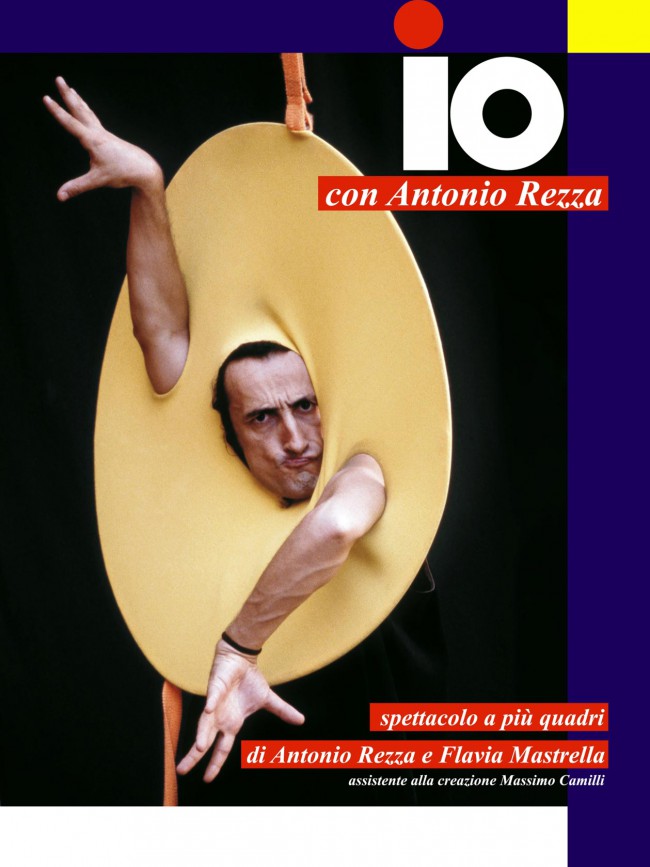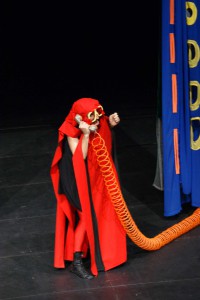Io

(1998)
by Flavia Mastrella, Antonio Rezza
with Antonio Rezza
setting: Flavia Mastrella
(never) written by Antonio Rezza
assistant to the creation: Massimo Camilli
lighting design: Mattia Vigo
stagehand: Andrea Zanarini
Sartoria Silvana Ciofoli
organisation: Stefania Saltarelli
production:
REZZAMASTRELLA
TSI La Fabbrica dell’Attore Teatro Vascello
As shortly before midst boasting and clamour
so the idea of inventure leads the mind to a life much longer.
The story
The worn-out radiologist takes x-rays of the patients’ coats while an impersonal being violates the places of origin, panting on a football field.
Io grows inhuman and sub-human, inventing washing-machines and instruments of quiet living.
Three people watch over the sleep of he who is sleeping while the folder of sheets, weighed down by his own seed, slips under the water that makes a shower of gentle spray.
Io eats life drinking the broken waters that speak of bitter birth, the sheet folder leaves for the galaxy breaking the idyll with his beloved cloth.
A board game is played, the dice is tossed, Io entrusts himself to the beauty of the profile and passes under narrow fixtures. Now and then a tournament, a man who tries out impossible ventures made rare by his over-emphasis, a yellow UFO scrutinising beings and words, a visionary sees vulvas in other people’s ears.
And Io, looking out over the third world where he discovers that, midst plagues and misery, rife is the appetite not supported by the table set for a feast.
Finally the catastrophe: Io brings himself down to size…
As shortly before midst boasting and clamour
so the idea of inventure leads the mind to a life much longer.
Setting and sculptures
This stage set also makes use of the scenic frames or canvases understood as art. The scenes are completely involved in the dramaturgical action, the structure is of thin metal, it holds up the sheets of material arranged at various levels and reflecting the movement of the body…
Everything wavers.
The colour of the frames expands, the metal insinuates itself into the material, the frequent scenic changes continually renew the chromatic movement. The yellow, red and blue of the various materials and intensity respond differently to the light that also exalts the diversity of the weaving.
The green veils, the whites of the silk, the netting and lace, some compact some transparent, cover the bodies revealing their silhouettes; the mutating frames have short lives getting abandoned on the floor creating coloured stains scattered around in a dark world.
Symmetry doesn’t exist, the shapes play vertically, the characters, be they solitary or in groups, appear likeable and victims of an agglomeration.







